Very few places on the planet are genuinely lawless, but for a long time, one of these rule-free enclaves existed within Kowloon City. Known as Kowloon Walled City, this place was not only free of governing bodies but was also thought by many to be the most densely populated place on earth.
At its peak, Kowloon Walled City’s population hovered around 35,000 people while only occupying the space of a single city block.
Kowloon Walled City was physically oppressive, lacking in sunlight, and, despite the relative happiness of its residents, an unsafe place to live. Despite all of this, there was true grief for the Walled Cities occupants when its demolition was announced. The one-of-a-kind location has spawned all sorts of movies, books, and video games using it as a setting.
Even now, Kowloon Walled City fascinates us, even if it has been gone for over a decade. Let’s look a little deeper into the mysteries and amazing existence of Kowloon Walled City.
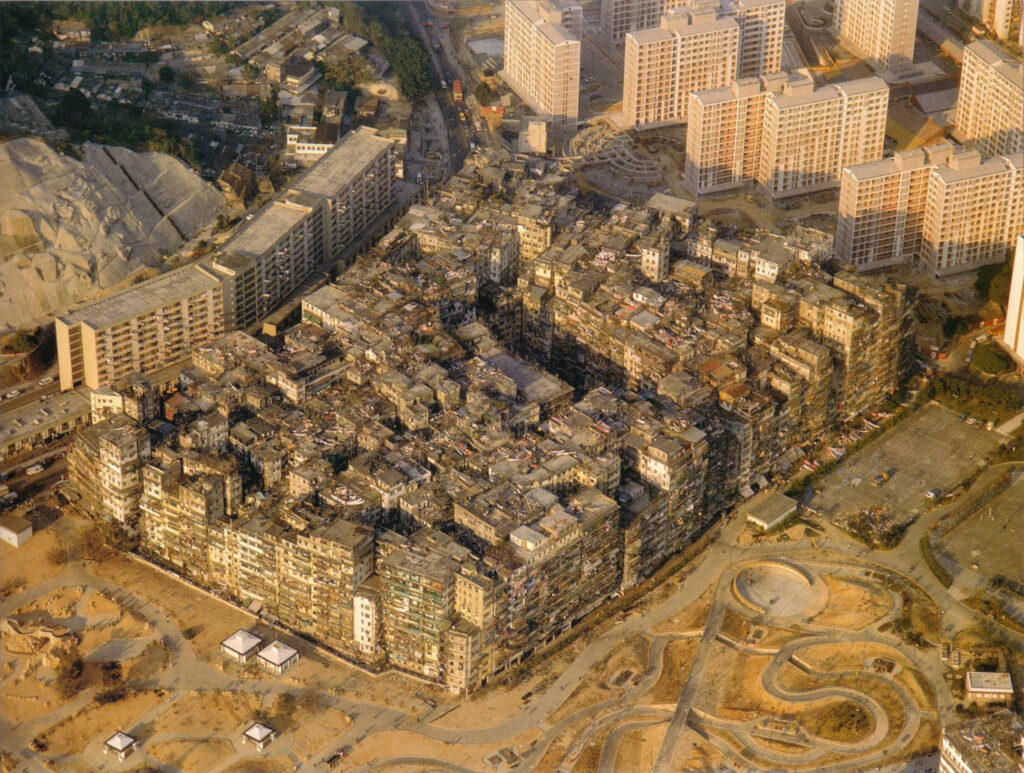
Origins of Kowloon Walled City
Kowloon Walled City wasn’t always the severely packed city-within-a-city that it became towards the end of its existence. Before it became a microcosm of a city, it was a military outpost that was built during the Song Dynasty.
At the end of the First Opium War (1839-1842), China was forced to give up a piece of Hong Kong to the British. China still wanted to see what this new British colony was up to, so to keep tabs on it, they built a walled fortress across Kowloon Bay.
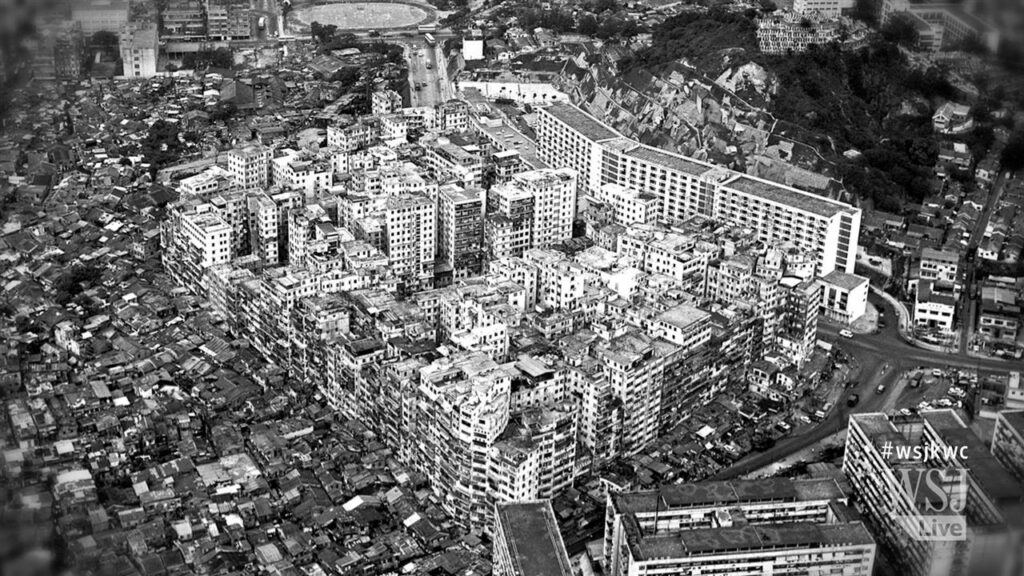
Even when it was just a fortress, the walled-in area became known as Kowloon Walled City. Later, when China lost all of Hong Kong to the British Empire, the Kowloon Walled City was exempt from the lease and remained under Chinese control. The Walled City was awkwardly placed and conspicuous, but it was independent and would try its best to remain that way.
Architecture and Layout of Kowloon Walled City
There were three attributes that made Kowloon Walled City the anomaly that it was–density, height, and chaotic architecture.
In a normal city, there are codes that must be followed when building anything, be it public or residential. Kowloon Walled City continued throughout its existence to remain independent and free of the laws imposed on the surrounding Kowloon City.
So when someone wanted to build something in Kowloon Walled City, they just built it. There was no thought for rules, regulations, or building codes. Those just weren’t concerns for the citizens of the Walled City.
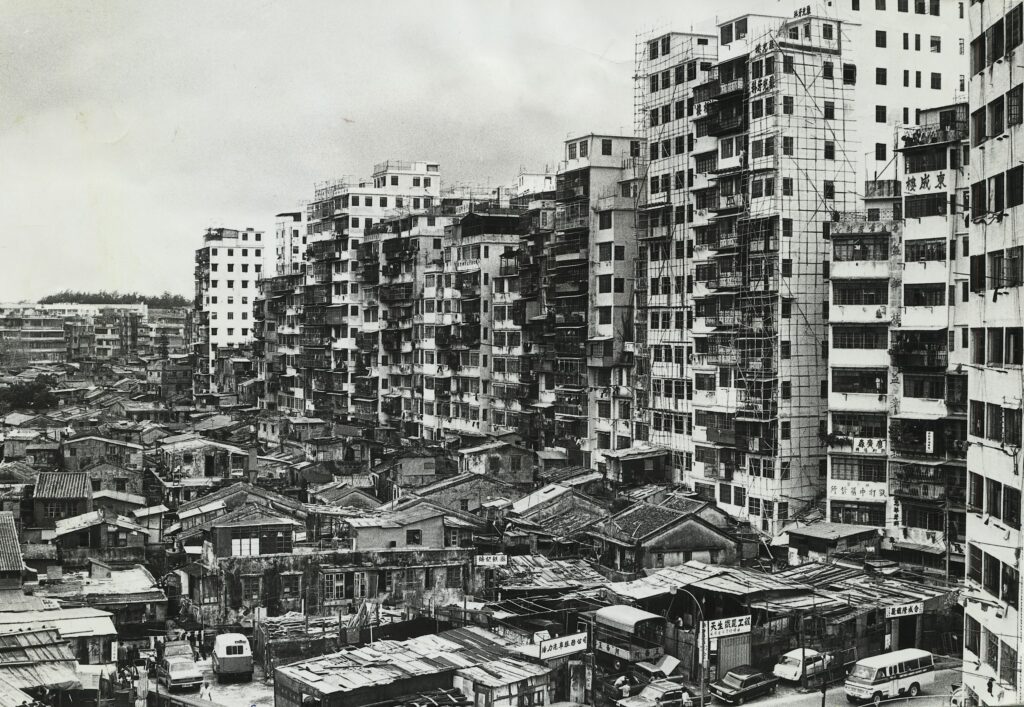
The boundaries of the city weren’t negotiable, and with the Walled City occupying only 2.6 hectares (6.4 acres) of space, the only way to accommodate the expanding population was to build upwards. This upward expansion exploded in the 1960s, with swaying, thin highrises being constructed at a breakneck speed only possible in a place without any sort of city planning.
These highrises were forced to stop at 13 to 14 stories due to the planes coming in and out of Kai Tak Airport, but that height was still hard to comprehend for buildings built on thin layers of concrete that had been haphazardly poured into shallow grooves in the ground.
These buildings were so shoddily constructed that they leaned into one another, almost merging together, and giving Kowloon Walled City the appearance that it was one single construct instead of hundreds of modular pieces.
Before the 1960s, Kowloon Walled City was mostly known as an area for squatters, sex workers, and drug dealers. Crime and gang activity was rampant when a fire in 1950 burnt the mostly wooden Walled City nearly to the ground.
From the burnt remains, the occupants of Kowloon Walled City rebuilt the enclave city anew, making it even more isolated and densely structured this time around. By the 1960s, the self-governing, self-reliant Kowloon Walled City that everyone knows so well was taking shape.
Kowloon Walled City Community and Residents
No one really knew what to do with the Walled City. The British wanted nothing to do with it, leaving it in China’s hands. Years passed, and Kowloon Walled City reached its largest size in the 1970s and 1980s. People outside the Walled City saw it as an eyesore, but inside the cramped walls, the residents called it home.
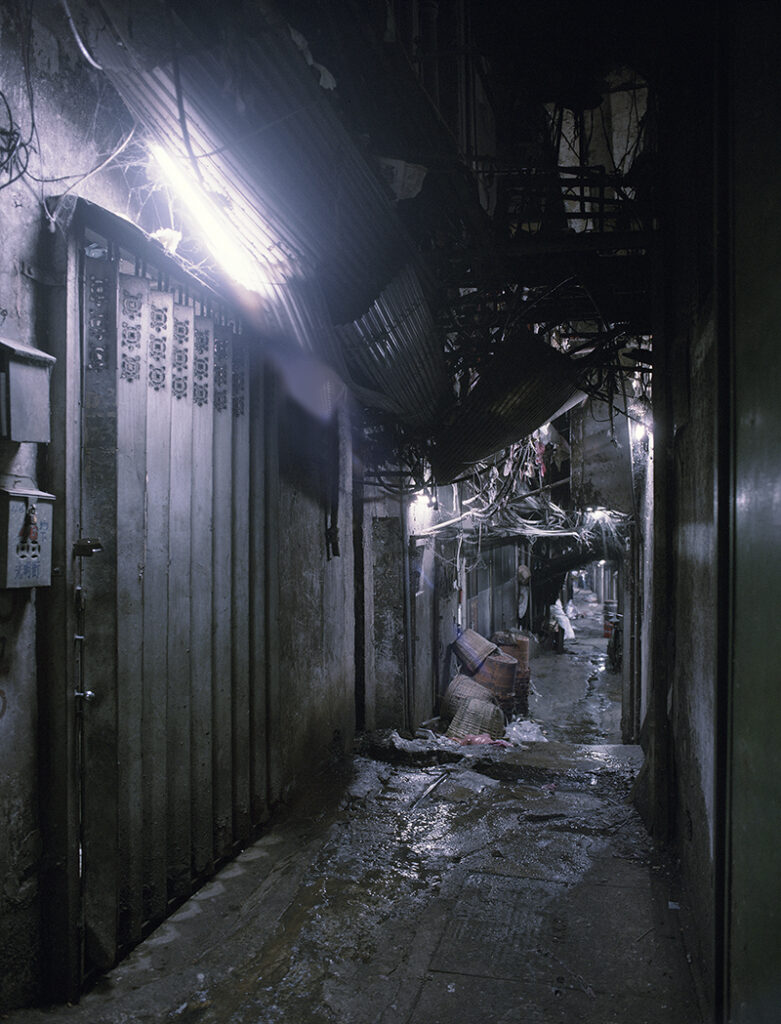
Soon, though, it would get another moniker–the City of Darkness.
Despite being self-governed, Kowloon Walled City inside was surprisingly functional. As the 300 or so buildings within the city started to merge into one single, solid structure, the residents adapted.
Eight municipal pipes provided water, and when the buildings became too tightly packed for sunlight to reach the streets, fluorescent street lights would be installed.
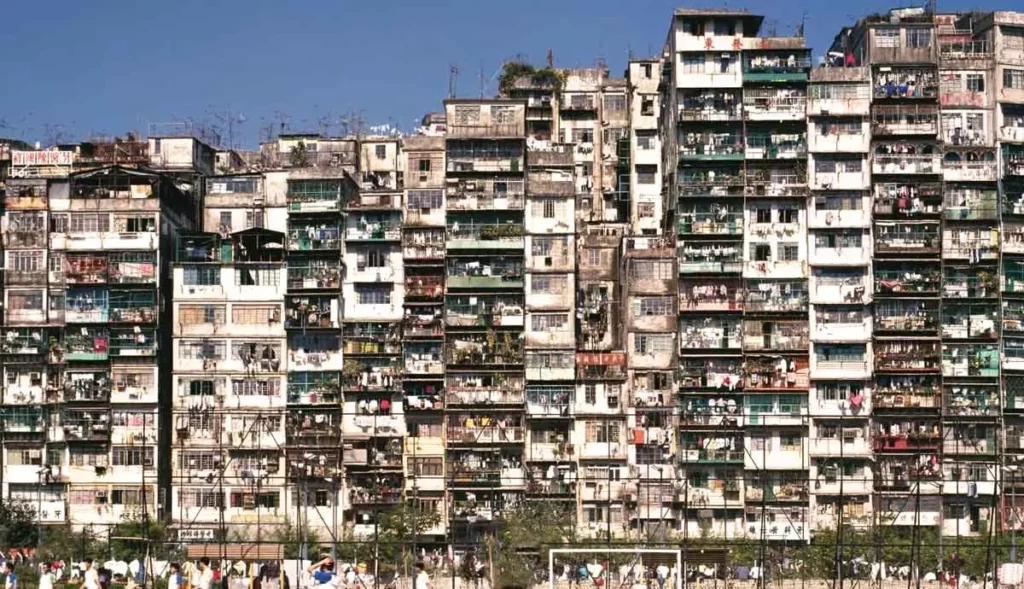
This is when the dim city truly became the City of Darkness, but those who occupied it had no desire to leave.
There was community-driven trash collection, mail service, and dozens of factories providing goods not just for the Walled City, but to Hong Kong as a whole.
Schools, doctors, and dentists popped up but were unregulated. Crime decreased in a major way, and for a time, Kowloon Walled City was miserably cramped, largely unregulated, but peaceful.
The Destruction of Kowloon Walled City and the Aftermath
Outside of the Walled City, there was unrest brewing. Even if the residents of the city were happy, the area was still unsanitary, and the quality of life was close to unacceptable, at least by the standards of the rest of Hong Kong.
In 1984, the Chinese and British governments both agreed that the Walled City had to go. Despite protests, the demolition of the city was announced in 1987, and in its space would go Kowloon Walled City Park.
Residents were not happy. To assuage these doubts, the government paid HK $2.7 billion ($350 million US) to be distributed among both residents and businesses in the Walled City. For some, this was enough, and they moved out without an issue.
Others had to be forcibly evicted from the strange, cramped place they had called home. By 1993, all the residents were out, and the Walled City was empty.
Demolition began in earnest on March 23, 1993, and concluded a little over a year later. It only took 13 months for one of the most fascinating places in history to be torn down, but the shadow and the legacy of Kowloon Walled City still remain.
Sources
“The Strange Saga of Kowloon Walled City”
https://www.atlasobscura.com/articles/kowloon-walled-city
“The Kowloon Walled City: Lawlessness and Claustrophobia”
https://www.thecollector.com/kowloon-walled-city-lawlessness-and-claustrophobia/

